Advancements in At-Home Lab Testing for Older Adults
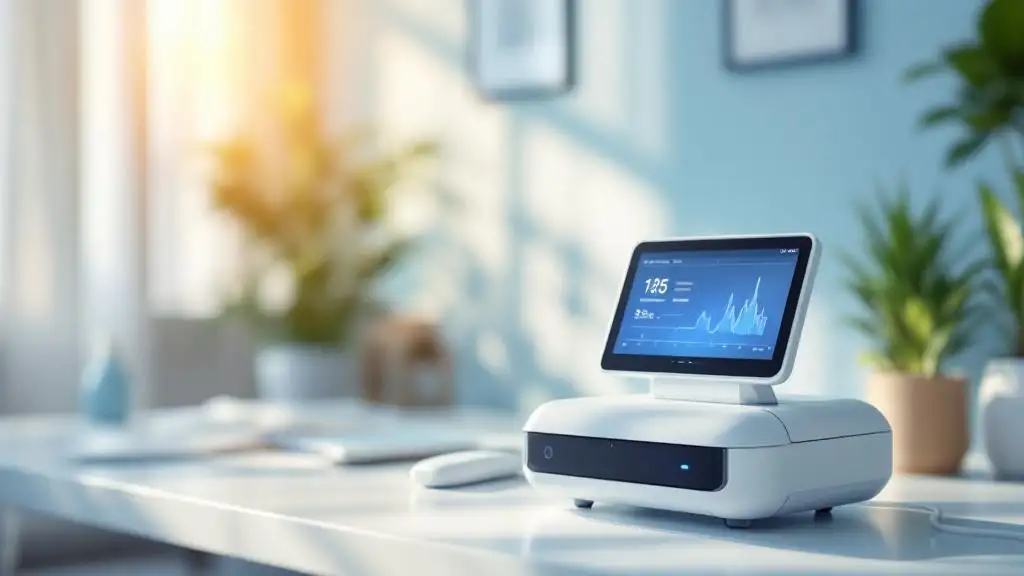
The Rise of At-Home Lab Testing in Geriatric Care
Recent advancements in at-home lab testing technologies are transforming how older adults manage their health, offering convenience, improved access, and personalized care options. This surge in innovation aligns with a growing body of research indicating high acceptance and trust in home-based diagnostics among older populations, particularly as these tools become more sophisticated and user-friendly.
Current Trends and Usage of At-Home Medical Tests Among Older Adults
A recent study indicates that nearly half of adults aged 50 to 80, specifically 48.1%, have purchased at least one at-home medical test. This trend reflects a growing acceptance and reliance on remote health diagnostics among the aging population. Among these purchases, COVID-19 tests are the most common, with 32% of older adults having bought them during the pandemic, demonstrating how immediate public health needs accelerated this behavior.
The types of tests used by older adults are diverse, including COVID-19 self-tests, genetic tests for ancestry or health risks, cancer screening kits, and tests for various infections. Blood-based diagnostics for diseases such as Alzheimer's have also entered the market, with several companies offering tests for biomarkers like pTau-217 and beta-amyloid 42/20, some available directly to consumers for at-home collection.
Most older adults perceive these tests positively. About 75.1% agree that at-home tests are more convenient than clinic-based testing, and 66% find them to be a good value. Furthermore, 91% of those who have purchased at-home tests express willingness to do so again, underscoring satisfaction with their utility. This convenience is especially significant for those with mobility issues or residing in underserved areas, where access to healthcare facilities can be challenging.
Demographic factors significantly influence the adoption of these tests. Education and income levels play pivotal roles: older adults with college degrees or higher incomes are more likely to purchase at-home tests—56% and 61%, respectively. Conversely, disparities exist among racial and ethnic groups; Black, non-Hispanic seniors are less likely to have used these tests (36%) compared to white, Hispanic, and other racial groups, though they show higher interest in future use, especially for COVID-19 and genetic testing.
Gender differences also emerge, with women demonstrating greater interest (87%) than men (76%) in utilizing at-home health tests. Additionally, those with higher education levels (college or more) are more inclined to see at-home testing as useful in the future—89%, versus 78% among those with less education. This suggests that familiarity and trust in digital health tools may be influenced by socioeconomic factors.
Perceptions of reliability and regulation are largely favorable. The majority of older adults believe that at-home tests should be discussed with their doctors, and many have shared their results, particularly for cancer screening tests, with their healthcare providers. About 90% share cancer test results, whereas sharing rates are lower for infection and DNA tests. Notably, around 53% of seniors think these tests are regulated by the government, although actual regulatory oversight varies, and many tests are not officially FDA-approved unless explicitly marketed as diagnostic devices.
Interest in future testing remains high, especially for COVID-19 (70%) and cancer (56%), highlighting ongoing concerns about health risks and screening. The development of sophisticated at-home health devices, including wearable sensors and mobile apps, is poised to further enhance autonomous health management. For instance, remote blood collection services and AI-enabled analysis support early diagnosis and chronic disease management.
However, certain safety and ethical considerations need attention. Ensuring equitable access to these technologies is vital, particularly for marginalized groups. Maintaining high standards of data privacy and security, as well as ensuring test accuracy and clinical validity, are crucial for safe implementation. Healthcare systems must also develop protocols to integrate remote testing outcomes into comprehensive care while respecting patient autonomy.
Looking ahead, the outlook for at-home diagnostics is optimistic. The integration of advanced digital tools, including wearables, IoT devices, and AI-powered analytics, promises to support more personalized, preventive, and continuous care. These innovations are expected to empower older adults to manage their health proactively, potentially reducing hospital visits and enhancing quality of life.
Market projections support this optimism, with the global at-home diagnostic market expected to grow from $7.3 billion in 2023 to over $12.3 billion by 2034. The COVID-19 pandemic catalyzed this growth, making at-home testing a mainstream component of healthcare. As technology advances, an era of real-time, minimally invasive health monitoring—such as microsensors for stress hormones and home-based microbiome testing—becomes increasingly attainable.
In conclusion, the rise in at-home testing offers significant benefits for older adults, including convenience, early detection, and health empowerment. Nonetheless, addressing regulatory, ethical, and technological challenges remains essential to ensure these tools are safe, reliable, and equitable across diverse populations.
Innovations in Home Testing Technologies and Sensor Systems
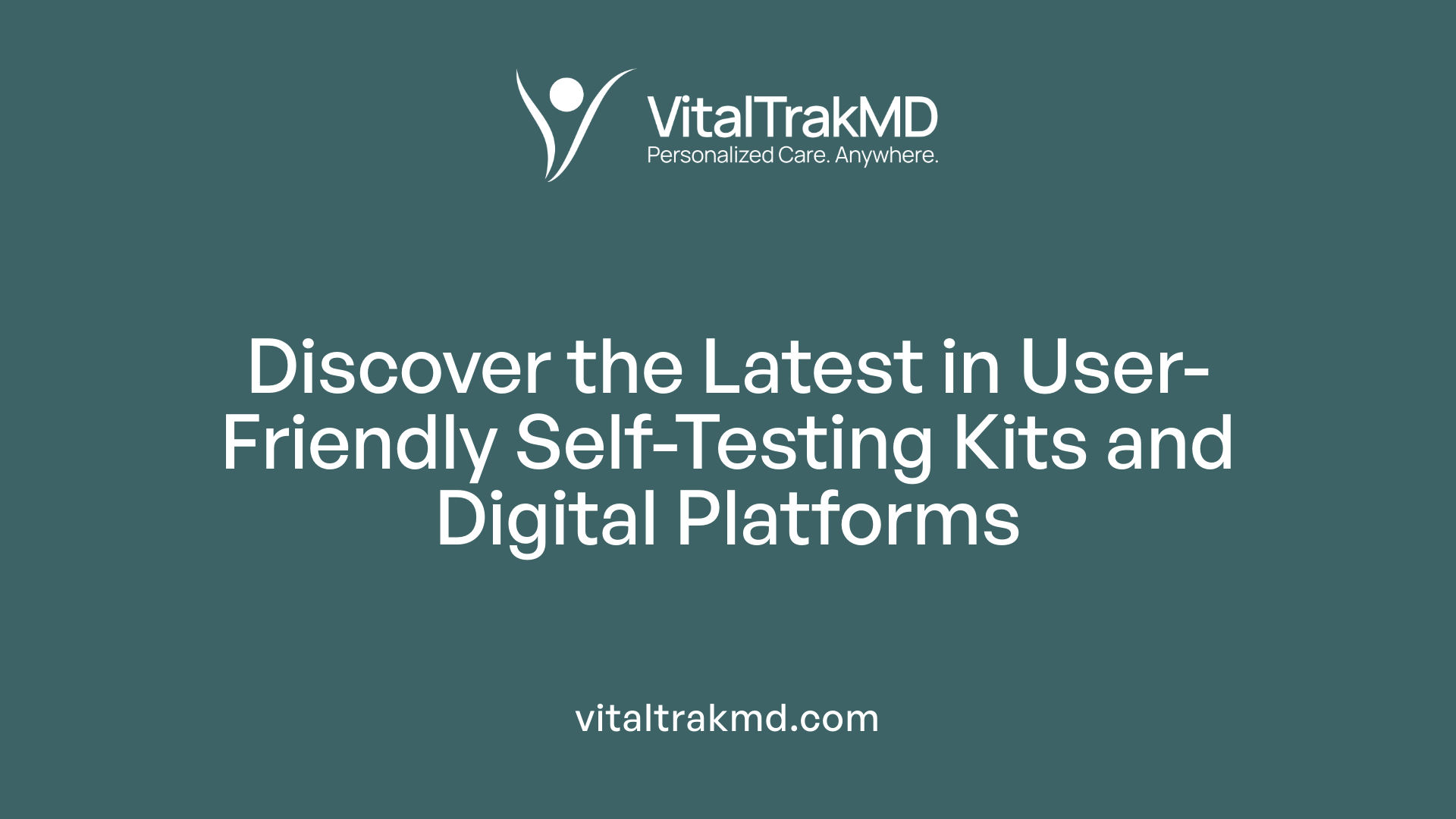
Development of user-friendly testing kits and digital health platforms
Recent advancements have led to the creation of accessible, easy-to-use testing kits and digital health platforms tailored for older adults. Companies are developing testing devices that incorporate AI analysis, smartphone connectivity, and minimal sample handling, making health tracking more straightforward. Platforms like UC Davis's Life Lab are incorporating sensors and mobile apps to help monitor health indicators seamlessly.
Integration of sensors, AI analysis, and smartphone connectivity
Innovative sensor technology, combined with AI and smartphones, is transforming at-home health management. Small vibration sensors record routine activities—such as medication intake, walking, or getting out of bed—without intruding on privacy. AI algorithms interpret this data in real time, providing early warnings of potential health issues and supporting aging in place.
Examples of new at-home testing devices and their capabilities
Emerging devices include blood analyzers like Withings U-Scan, which assess urine health, and Opteev’s breath analyzers for detecting respiratory viruses. Companies such as Apollo Health and BetterBrain are offering at-home blood tests for Alzheimer's disease biomarkers, such as pTau-217 and beta-amyloid. Additionally, microbiome testing kits are available, enabling users to analyze gut health from home.
Regulatory progress and clinical validation
Many new at-home diagnostic devices are progressing through FDA approval or clinical trials, ensuring reliability and safety. For instance, some blood-based Alzheimer's tests are available via prescription, while others are in validation stages. These technological advances are supported by rigorous research, emphasizing the importance of regulatory oversight to protect consumers from inaccuracies or false results.
| Test Type | Examples | Capabilities | Regulatory Status |
|---|---|---|---|
| Blood Tests | Lumipulse G pTau 217 | Early detection of Alzheimer’s biomarker in adults 55+ | FDA-approved for clinical use |
| Urine Analysis | Withings U-Scan | In-home monitoring of urine health | Available commercially |
| Respiratory | Opteev’s ViraWarn | Detects respiratory viruses | In clinical trials |
| Microbiome | Gut health kits | Gut microbiota analysis | Over-the-counter |
This rapid growth in at-home testing and sensor technology promises increased convenience, earlier detection, and better disease management for older adults, aligning with the broader transformation of healthcare into a more personalized, accessible system.
Remote Monitoring and Aging in Place Through Technology

The role of in-home sensors and unobtrusive monitoring systems
Recent advancements in sensor technology enable continuous health monitoring for older adults without disrupting their daily routines. These small vibration sensors and motion detectors can track activities such as medication-taking, walking, and bed exits, providing real-time data to healthcare providers. The systems are designed to be as discreet as possible, ensuring privacy while gathering essential health information.
Projects like NIH’s CART and UC Davis’s Digital Technology Core
Programs like the NIH’s Collaborative Aging (in Place) Research Using Technology (CART) and UC Davis’s Digital Technology Core are leading the way. CART, launched in 2016, employs in-home sensors in over 200 homes across diverse communities to monitor sleep, mobility, cognition, and socialization. Similarly, UC Davis's Life Lab installs sensors in homes of older adults to observe routines related to walking, sleeping, and medication adherence, aiming to detect early health decline.
Data collection on activities, sleep, mobility, socialization
These technologies continuously collect data related to daily activities, sleep patterns, physical mobility, and social interactions. Analyzing this wealth of information helps identify subtle changes that could indicate health issues, allowing for timely intervention. For instance, deviations in sleep or reduced mobility might signal emerging health problems or risks to independence.
Benefits for aging in place and early detection of health issues
Implementing unobtrusive monitoring supports aging in place by enabling older adults to live independently longer. The data collected facilitates early detection of health decline, such as mobility impairment or cognitive shifts, which can lead to prompt medical responses. Moreover, these tools reduce reliance on frequent clinical visits, improve safety, and enhance overall quality of life, making them a promising component of modern healthcare for seniors.
The Role of Digital Platforms and Artificial Intelligence in Geriatric Care
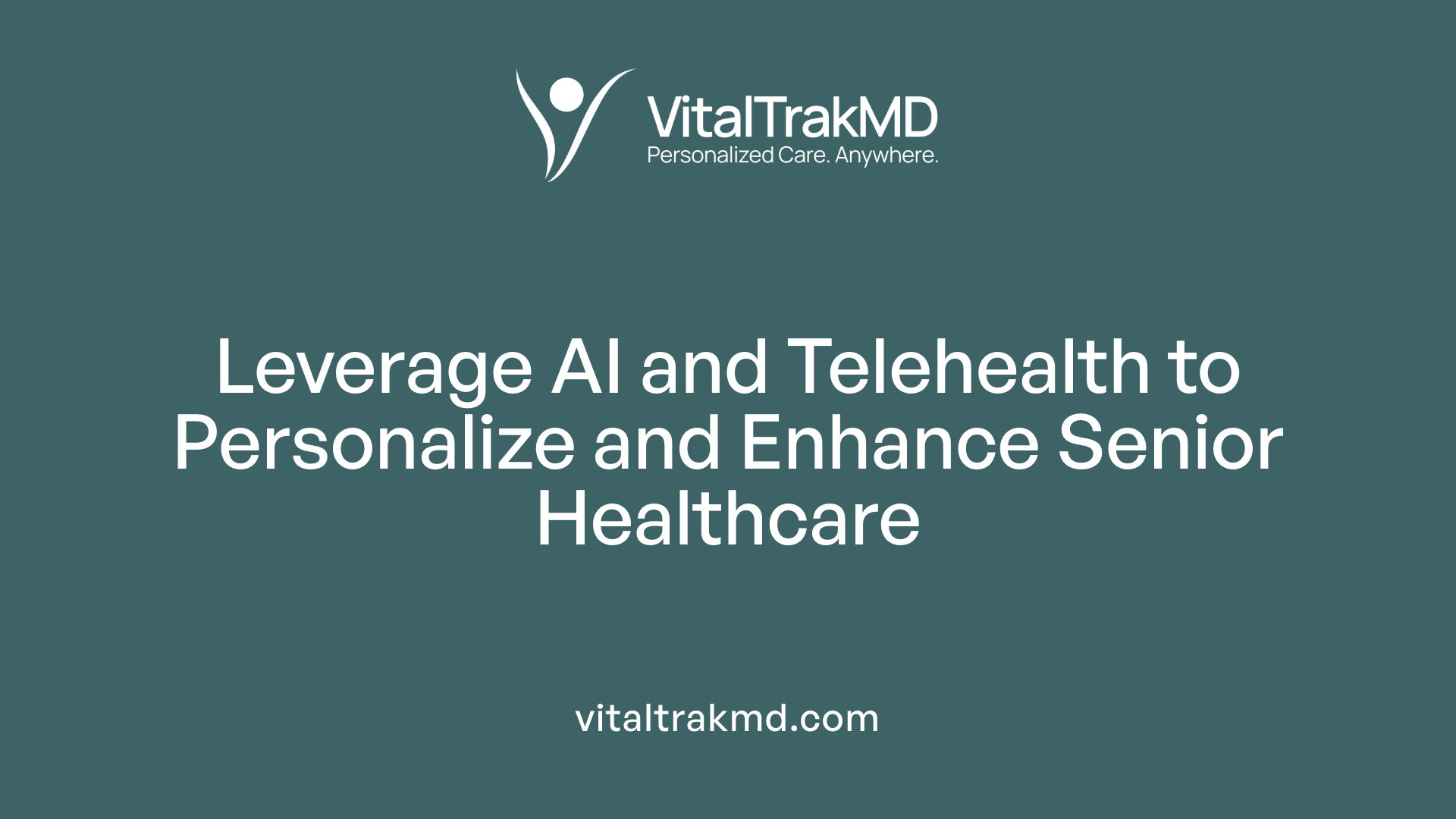 Care management apps and telehealth platforms are transforming how healthcare is delivered to older adults. These digital tools enable remote monitoring and communication, allowing seniors to manage their health actively from home. For example, platforms like UC Davis’s I-Care facilitate daily activity tracking, medication reminders, and direct communication with caregivers, thereby supporting aging in place.
Care management apps and telehealth platforms are transforming how healthcare is delivered to older adults. These digital tools enable remote monitoring and communication, allowing seniors to manage their health actively from home. For example, platforms like UC Davis’s I-Care facilitate daily activity tracking, medication reminders, and direct communication with caregivers, thereby supporting aging in place.
Artificial intelligence (AI)-driven decision support systems (DSS) are increasingly employed to analyze vast amounts of health data collected through at-home tests and sensors. These systems generate personalized care recommendations, identify early signs of health decline, and assist clinicians in making timely interventions. Inspired by neural reflex principles, systems like the SMART platform coordinate responses across care sectors, improving care quality and efficiency.
Integration of at-home test data into personalized care plans is a significant advancement. Information from COVID-19 tests, genetic tests, and blood biomarker analyses—such as for Alzheimer’s disease—can now be incorporated into comprehensive health management strategies. This integration helps tailor interventions, monitor disease progression, and optimize treatment, leading to better health outcomes.
Usability and acceptance among older adults have improved through technological development. Studies show that about 80% of seniors find at-home testing convenient, and most trust these tools for health monitoring. Usability testing of apps like the Care Receiver App indicates high acceptability, with older adults feeling comfortable using these digital platforms, especially when designed with simplicity and clear guidance. Continued adoption relies on educating users about test accuracy and privacy considerations.
Barriers and Disparities in Adoption of At-Home Tests
Socioeconomic and racial disparities in usage
While nearly half of older adults (48.1%) have purchased at-home medical tests, significant disparities exist based on socioeconomic status and race/ethnicity. Older adults with higher education levels—such as those with a college degree or higher—are more likely to buy at-home tests, with 56% participation compared to lower percentages among those with less education.
Similarly, income plays a vital role; adults earning over $100,000 annually show a 61% usage rate, higher than their lower-income counterparts. Race and ethnicity also influence utilization. Black, non-Hispanic older adults report lower usage (36%) relative to White, Hispanic, and other racial groups, which range from 46% to 53%.
These disparities stem from various factors, including issues of accessibility, awareness, and trust in testing processes. Despite these challenges, interest in future use remains high overall, with 82% of older adults expressing a desire to take at-home tests.
Most older adults agree that results should be shared with their healthcare providers, yet actual sharing behaviors vary greatly depending on the type of test. For example, 91% notify providers about cancer test results, whereas only 55% share infection test outcomes, and just 9% discuss DNA tests.
Addressing these disparities requires targeted efforts to improve access, education, and trust among underserved groups. Promoting inclusive health technologies and ensuring equitable dissemination of at-home testing options are crucial for improving health management in diverse older populations.
How advancements in at-home lab testing technologies impact health management for older adults
Technological innovations in at-home testing—such as blood-based diagnostics for Alzheimer’s biomarkers and infectious diseases—offer new avenues for proactive health management. These tools enable older adults to monitor key health markers conveniently at home, facilitating earlier detection of conditions like cognitive decline or infections.
The development of devices with AI analysis, user-friendly interfaces, and connectivity to digital platforms makes testing more accessible. For example, blood tests like Lumipulse G pTau 217 can now be requested directly by consumers—though currently only via prescription—helping with early disease recognition.
Such advancements promote personalized treatment plans, improve adherence to health monitoring routines, and reduce dependency on frequent clinical visits. They are particularly beneficial for managing chronic conditions and reducing healthcare disparities.
Ethical and safety considerations associated with at-home testing for older populations
While at-home testing enhances convenience and early detection, it also raises ethical and safety concerns. The risk of false positives or negatives, especially with unregulated or unvalidated tests, may lead to unnecessary anxiety or misdiagnosis.
Older adults may also face challenges in understanding complex test results without proper medical guidance. There’s a risk of misinterpretation, which can result in inappropriate health decisions.
Furthermore, privacy concerns arise from data collection and sharing, particularly for continuous monitoring systems. Ensuring data security and informed consent is essential.
Regulators, healthcare providers, and industry must collaborate to establish standards, validate tests, and educate consumers about limitations and appropriate use.
Future outlook for at-home diagnostics and health monitoring for older adults
The future of at-home diagnostics for older adults looks promising, with ongoing innovation and expanding regulatory approval. Growth projections indicate a global market valued at over $12 billion by 2034, driven by advances in sensor technologies, AI, and telehealth integration.
Emerging devices are becoming more sophisticated, capable of real-time health monitoring, and integrating seamlessly with healthcare systems. Initiatives such as NIH’s Collaboration Aging in Place Research Using Technology (CART) aim to develop unobtrusive in-home sensors to support aging at home.
As technology becomes more inclusive and reliable, older adults will have greater access to personalized, continuous health assessment, which may significantly improve quality of life and independence.
| Aspect | Current Status | Future Trends | Additional Comments |
|---|---|---|---|
| Market Size | $7.3 billion in 2023 | Over $12 billion by 2034 | Rapid industry growth driven by tech advances |
| Technologies | Blood diagnostics, sensors, AI | Real-time remote monitoring, microsensors | Aims to enhance early detection and management |
| Regulation | Varies; some devices approved | Increased validation and standards | Ensuring safety and accuracy remains a priority |
| Accessibility | Disparities based on SES, race | Focus on inclusivity and equity | Critical for equitable healthcare delivery |
| Ethical Concerns | Data privacy, false results | Improved education, regulation, and oversight | Essential to protect vulnerable groups |
Regulatory Landscape and Quality Assurance of Home Tests
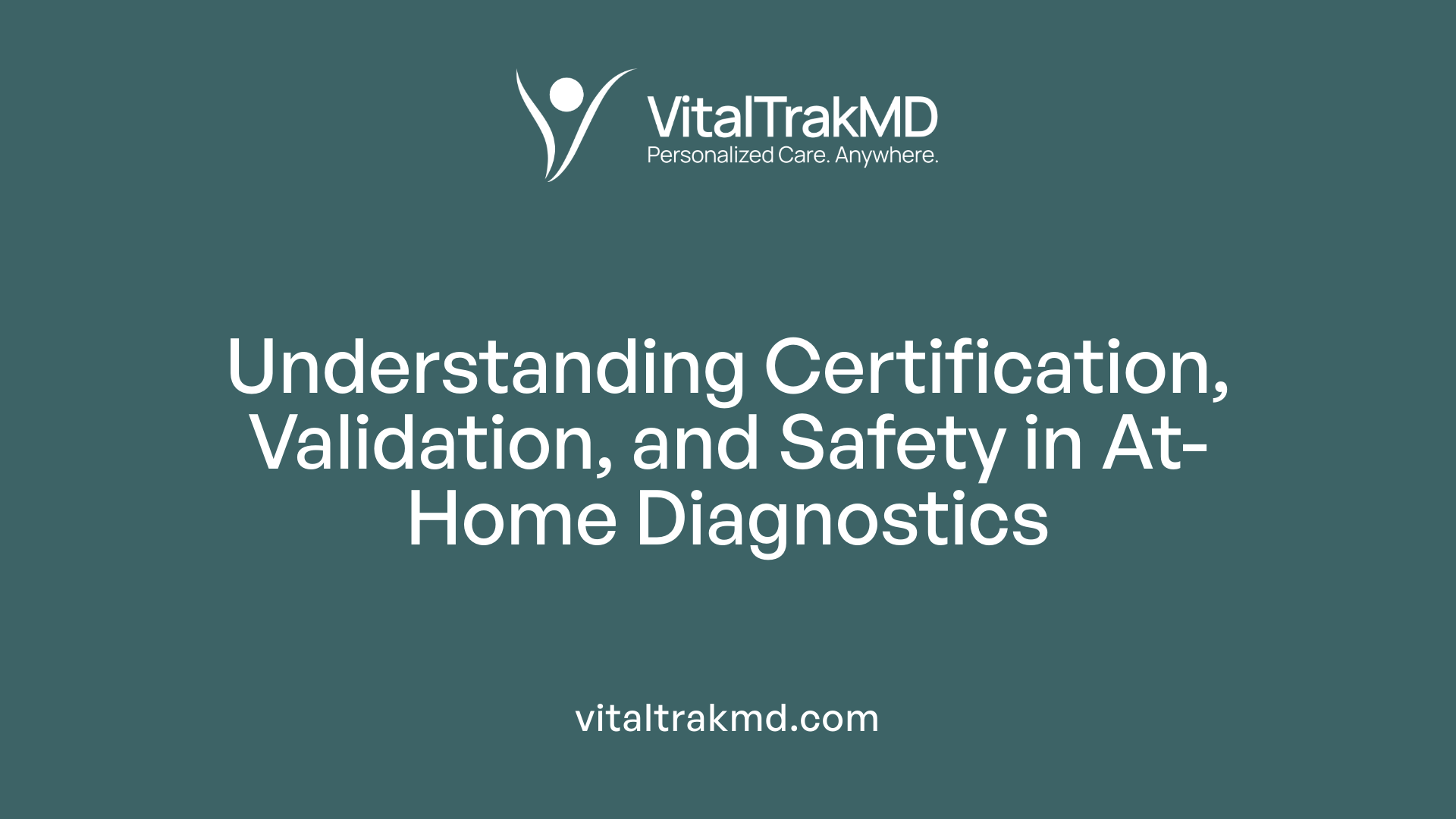
What laboratory tests are recommended for older adults?
Older adults frequently utilize at-home tests for various health concerns, including COVID-19, genetic testing, and cancer screening. While self-administered tests offer convenience, it remains essential for older individuals to discuss results with healthcare providers for proper interpretation and follow-up. Tests such as blood-based diagnostics for Alzheimer's biomarkers are now available, but these require medical oversight. Ensuring appropriate tests are chosen and results correctly understood is vital for maintaining health.
What are the commonly expected changes in lab values in older adults?
In older populations, lab values can differ from younger individuals due to age-related physiological changes. Typical expected alterations include higher cholesterol levels, changes in blood glucose, and variations in hormone levels. Recognizing these shifts helps in proper diagnosis and treatment. At-home testing that measures these markers can aid in ongoing health management but should be interpreted within the context of age-specific norms.
How do advancements in at-home lab testing technologies impact health management for older adults?
Recent technological innovations, such as user-friendly testing kits and digital health platforms, have improved the ability of older adults to monitor their health regularly. Tools incorporating sensors, AI analysis, and smartphone connectivity enable early detection of health issues like diabetes, kidney function, or even mental health conditions. They facilitate proactive care, reduce hospital visits, and empower seniors to manage chronic illnesses more effectively.
What are the ethical and safety considerations associated with at-home testing for older populations?
Soaring adoption of at-home tests raises concerns about regulation, accuracy, and the psychological impact of inaccurate results. Many tests are not yet FDA-approved or fully validated, posing risks of false positives or negatives. Ethical issues include data privacy, potential anxiety from misinterpretation, and the need for proper medical consultation. Clear guidance from healthcare providers and regulatory agencies is critical to ensure safe usage.
What is the future outlook for at-home diagnostics and health monitoring for older adults?
The industry projects continued growth, with digital health devices, advanced sensors, and AI-powered analysis becoming integral to older adults' health care. Regulatory improvements, validation studies, and technological innovations will increase trust and accuracy. Enhanced remote monitoring, personalized health ecosystems, and integration with healthcare systems will further support aging in place and early intervention, transforming senior care.
| Aspect | Current Status | Future Expectations | Details |
|---|---|---|---|
| Technology | Growing variety of tests and devices | More accurate, user-friendly devices | Includes AI, wearables, sensors |
| Regulation | Limited FDA oversight for some tests | Increased regulation and validation | Ensuring safety and efficacy |
| Access | Increasing use among seniors | Broader accessibility and coverage | Reduces barriers to care |
| Ethical Considerations | Concerns over false results | Improved standards and oversight | Protects patients and data |
| Impact | Enhances self-management | Seamless integration with healthcare | Promotes independence |
Advances in home testing promise a future where older adults can better manage their health proactively, with safe and reliable tools guiding clinical decision-making.
Emerging Technologies and Future Innovations in Self-Testing
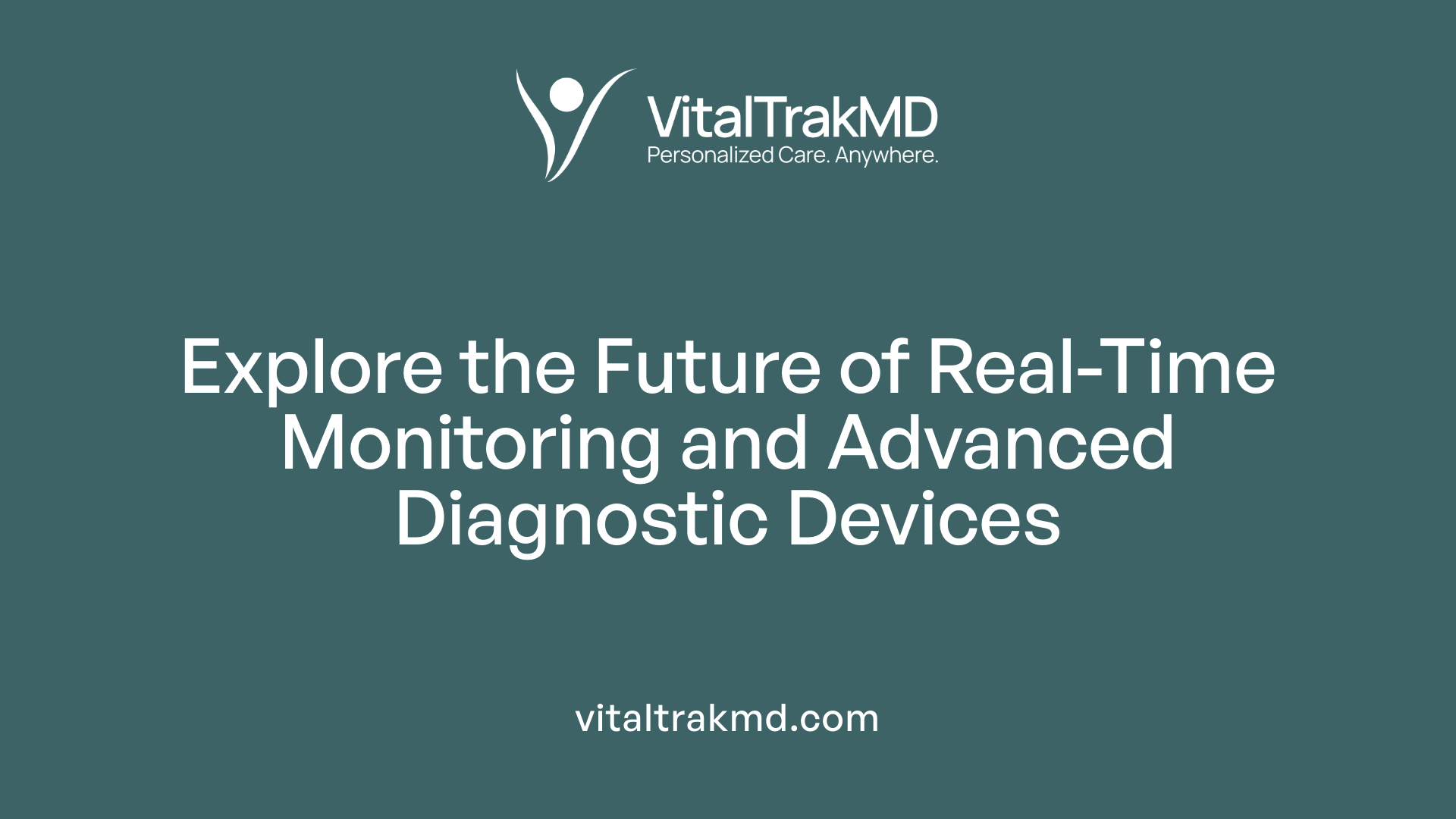
What laboratory tests are recommended for older adults?
Many older adults now have access to a range of at-home tests, including COVID-19, DNA, cancer, and infection tests. Blood-based diagnostics, such as those for Alzheimer’s biomarkers, are increasingly available, with the FDA approving tests like Lumipulse G pTau 217/Beta-Amyloid 1-42 for early detection in symptomatic adults over 55. Customers can purchase these tests directly, with some offering at-home blood collection options. While these innovations provide convenience and early insights, they should be used responsibly under medical guidance, especially since some tests lack full regulatory approval.
What are the commonly expected changes in lab values in older adults?
In aging populations, certain laboratory values tend to shift. These include increasing cholesterol levels, blood sugar metrics, and markers of inflammation. The development of at-home testing kits for cholesterol, glucose, and even disease-specific biomarkers helps monitor these changes regularly, assisting in early intervention. For instance, tests for A1C levels or beta-amyloid peptides can reflect underlying health conditions like diabetes or Alzheimer’s disease, although interpretation should be done with healthcare professional input.
How do advancements in at-home lab testing technologies impact health management for older adults?
Technological progress, such as blood biosensors, wearable diagnostics, and AI-driven analysis, has transformed health management. Devices like Withings U-Scan or the Minuteful Kidney test enable frequent, convenient health monitoring, reducing the need for clinic visits. AI integration helps interpret test results accurately, providing personalized health insights and early detection of potential health risks, fostering proactive care. These innovations support aging in place, improve chronic disease management, and promote independence for older adults.
What are the ethical and safety considerations associated with at-home testing for older populations?
Despite benefits, at-home testing raises ethical concerns about data privacy, accuracy, and psychological impacts like undue anxiety from false positives. Some tests are not FDA-approved, leading to questions about reliability. It’s essential that results obtained at home are reviewed by healthcare professionals who can contextualize findings appropriately. Proper regulation, data protection, and patient education are vital to ensure safety and trust in these rapidly evolving technologies.
What is the future outlook for at-home diagnostics and health monitoring for older adults?
The future holds promising innovations such as smart, customizable testing kits and wearable sensors that provide real-time health data. Technologies like microsensors for continuous monitoring of stress hormones or AI algorithms for predicting health issues will become more integrated into daily life. The industry is projected to grow significantly, advancing towards more accurate, accessible, and user-friendly solutions. These developments will likely improve early diagnosis, personalized treatment, and overall health outcomes for aging populations, supporting longer, healthier, independent lives.
Empowering Older Adults through Technology-Driven Healthcare
The ongoing innovations in at-home lab testing and remote health monitoring are poised to redefine healthcare for older adults. These technological advances will enable more proactive, personalized, and accessible care, supporting aging in place while addressing existing disparities. As regulations and safety standards evolve, and as digital health tools become more inclusive and user-friendly, older individuals will increasingly harness these tools to maintain independence and improve quality of life. The integration of AI, sensor technology, and telehealth platforms holds immense promise for a healthier, safer, and more connected aging experience.
References
- Use of At-Home Medical Tests Among Older US Adults
- Big gaps seen in home medical test use by older adults
- At-Home Blood Tests Are Becoming A Trend. What It Means for ...
- The Rise of At-Home Blood Testing: Why It's Transforming Healthcare
- NIH initiative tests in-home technology to help older adults age in ...
- Big gaps seen in home medical test use by older adults
- At-Home Medical Tests - National Poll on Healthy Aging
- At-Home Alzheimer's Testing Is Here: Are Physicians Ready?
- COVID Opens Door to Comfort With Rise in At-Home Medical Tests
- The Rise Of At-Home Lab Tests - The Medical Futurist
Recent articles
Want to Feel Better and Live Healthier?
Join hundreds of patients taking control of their health with personalized care that fits their life – not the other way around.
Rated 4.8/5 by 32+ customers







